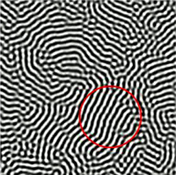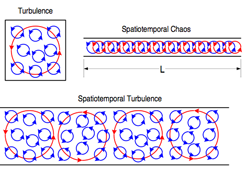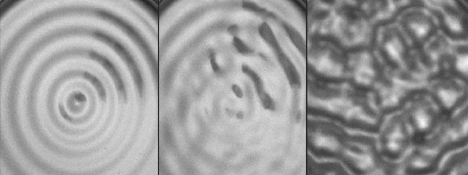2.26.2015
MAT 256 Course
Anne-Marie Skriver Hansen (annemarie_s_hansen@umail.ucsb.edu)
Will Wolcott (wolcott@umail.ucsb.edu)
The Well
Project Description
"The Well" is an exhibition where the wievers will experience the natural phenomena that appears when soundwawes are sent through water. The viewer can interact with the sound and change the water patterns by stepping into the middle of a round projection of water and pull in a rope. Around the wiewer and the projection of the actual natural phenomena the wiewer will see the water waves "unwrapped".

In the center: the projection of a petri-disk that delivers the visual source material.
Above wiever's head and in the midlle of the projection of the captured water patterns:a rope construction. When the viewer pulls in the rope, he/she will change the sound that runs through the waterpatterns.
Around wiever's head: water patterns unwrapped. The exhibition consists of a spatial setup with multiple screens, where the screens are interconnected in a direct line. The screens are showing the unwrapped realtime image of sound waves that run through water.
Project Methods
Capturing a natural phenomena
The natural phenomena that appears when sound waves are sent through water is a very complex animating image when it is video captured. In a setup with a subwoofer, a petri disc that contains a liquid (water, oil, milk, ink a.o.) and a video camera that is capturing the water patterns, we are able to create a controlled situation, where we can video capture small changes of sound waves that are sent through the water.


The sound source
The sound is generated by a simple oscillator, where sound signals such as a cycle, a phasor and a triangle can interfere with each other at different pulse widths. When the viewer interacts with the sounds he/she will change the water pattern.
Generating images from the video capture of the natural phenomena
Our first idea was to analyze the water patterns and then use the data from that analysis to generate graphics with it. But by using various analysis methods we were only be able to see small parts of what was really happening visually with the water patterns. If you, for example, take the average values from the white and the black pixels in the image and make the information of that data generate other visuals, you loose so much data from the original image that the generated image has almost no relation to the original image.

Unwrapping a natural phenomena
We wanted to keep the activity and the complex transformations of the sound waves in the original image, so instead we decided to unwrap the captured image by showing the complexity of the water patterns in a long string. By taking the values from a certain amount of scan lines (one pixel wide each) we are showing the scan line values. The amount of scan values that we capture from the natural phenomena is so big, that it will have to run across a number of screens. The natural phenomena now is interpreted into energy of light that runs across an entire room.

Design of the unwrapped image
Each scan line of the captured image will contain a range of pixel values in grayscale (from 0 to 255). Those pixel values can be interpreted into light that runs across the screens in a room. In order to keep the complexity of the water patterns we wanted to make the light interpretation of the captured image as minimal as possible. We decided to map the values from the scan lines to pixels that have the same y-position on the screen as the grayscale value. In addition to that we translating the transformation of each pixel over time into brightness and size of each pixel.

Rayleigh-Bénard Convection:
http://astron.berkeley.edu/~jrg/ay202/node132.html
Spatioremporal Chaos in Rayleigh-Bénard Convection:
http://www.its.caltech.edu/~mcc/Talks/Exeter_05.pdf
Spatio-temporal chaos in rotating Rayleigh-Bénard convection:
http://online.itp.ucsb.edu/online/pattern_c03/becker/
Université York University, Science and Everyday Phenomena, Lecture 19: Science in the Kitchen
http://www.yorku.ca/sasit/sts/nats1800/lecture19a.html
Hexagonal convection patterns in atomistically simulated fluids, PHYSICAL REVIEW E 73
http://www.ph.biu.ac.il/~rapaport/papers/06b-pre.pdf
Team Participants
Anne-Marie Skriver Hansen: Studying a master of fine art student specializing in digital media art and physical computing. She has a masters in digital media design from Designskolen Kolding, Denmark.
Will Wolcott: Studying a master in the media arts and technology program specializing in software engineering.
Collaboration: Both participants were working on the concept development on the artistic and the engineering side as well as the implementation of the ideas. Our working methods were joint experimentation and conceptualization of ideas. We both contributed with knowledge inside our fields and tried to inspire each other with bits of that knowlege though our working process.